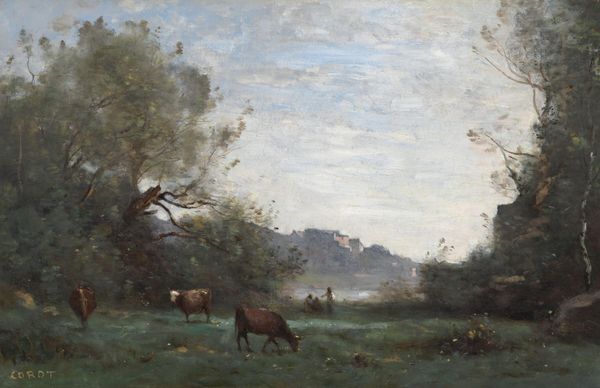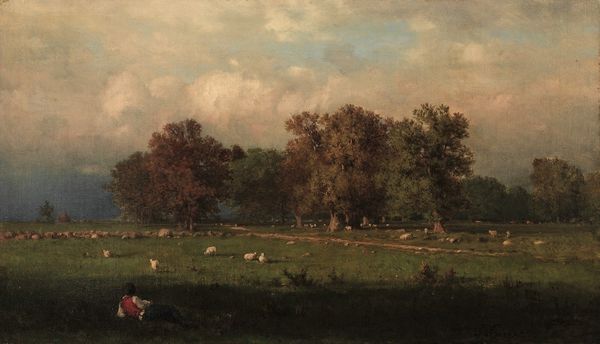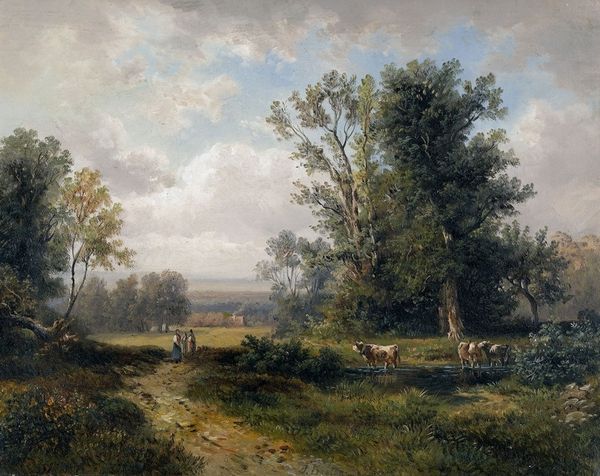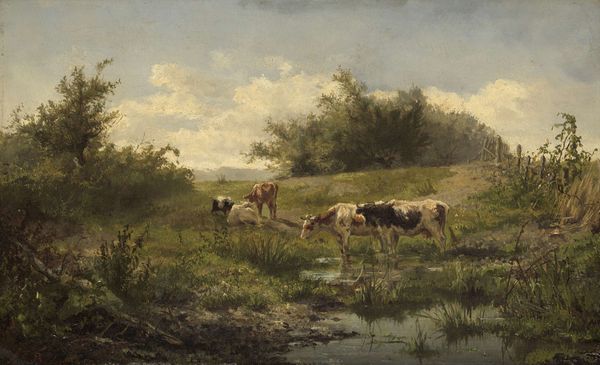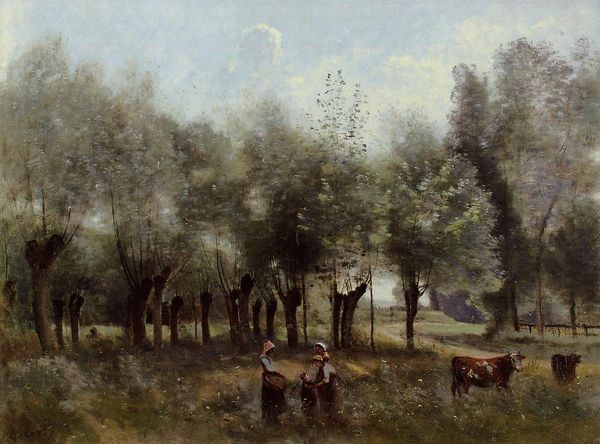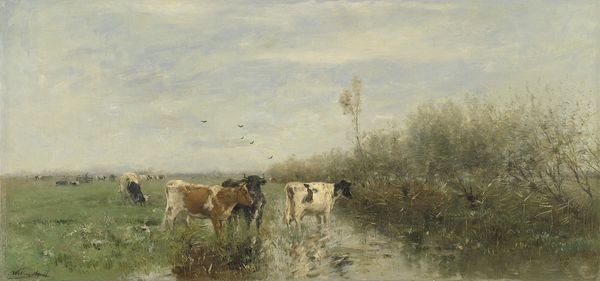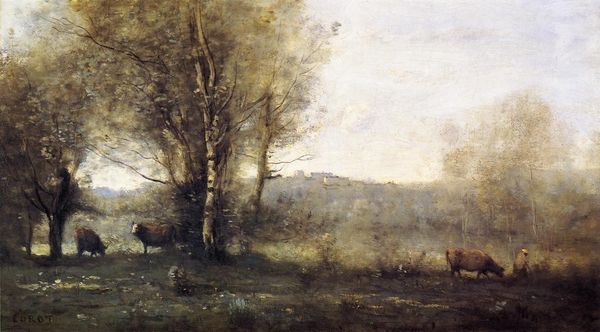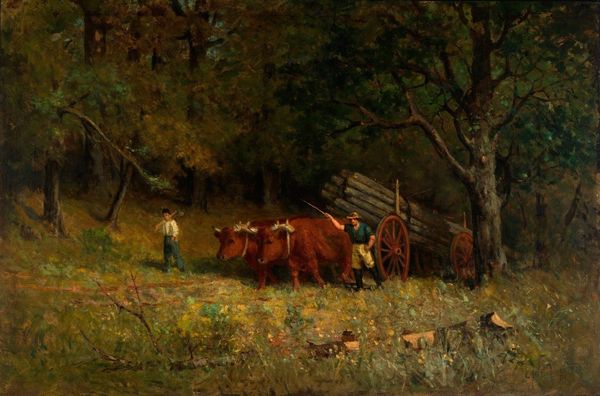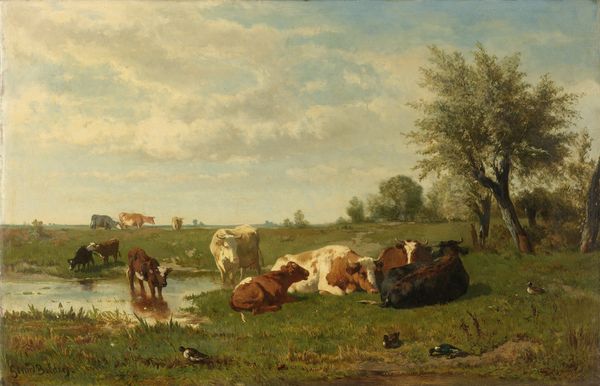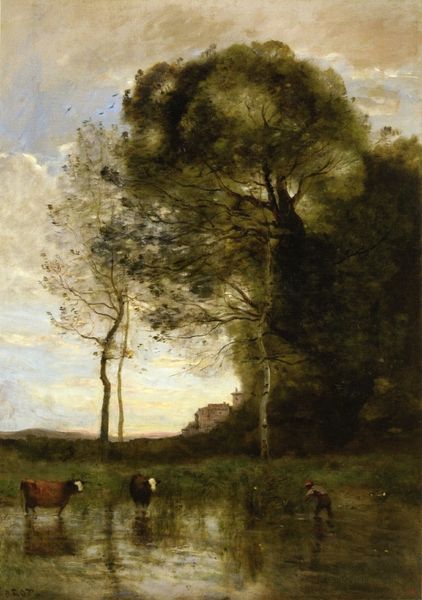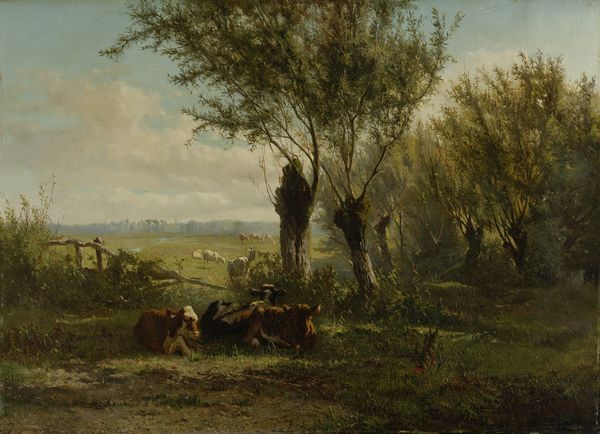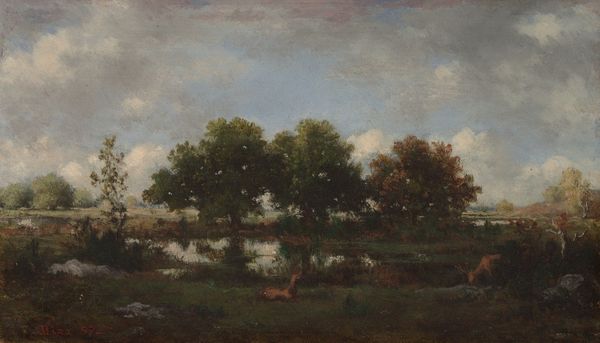
Copyright: Public Domain: Artvee
Editor: We’re looking at Félix Ziem’s *Chevaux Sauvages En Camargue*, painted in oil sometime between 1890 and 1895. The loose brushstrokes and hazy atmosphere give it an almost dreamlike quality. What do you make of the composition here? Curator: The composition reveals a carefully structured interplay between light and shadow. Observe how the artist has placed the darker masses of foliage to the left, creating a visual anchor that balances the expansive sky on the right. This contrast serves not merely to depict a scene, but to organize the viewer's gaze, guiding it through a spatial dialectic of enclosure and openness. Editor: Spatial dialectic? Curator: Precisely. Notice how the eye moves from the relative darkness and complexity of the trees to the bright, open horizon. Consider the placement of the horses, strategically positioned to interrupt the horizon line. It disrupts what could have been an ordinary landscape. The artist intentionally manipulates visual expectations through disruptions. Editor: So it’s about the relationships between these elements? Curator: Indeed. Color also plays a vital role. The subdued palette—dominated by blues, greens, and browns—creates a harmonious field, while the white horses introduce strategic accents. Ask yourself: How do these focal points alter our apprehension of the canvas's surface? The formal logic creates aesthetic interest and invites us into sustained observation. Editor: I see what you mean about the visual structure; it is all very deliberate. Curator: By recognizing these strategies, we enhance our perception. The artwork ceases to be merely representational, and starts speaking more about itself and what we expect from an artwork.
Comments
No comments
Be the first to comment and join the conversation on the ultimate creative platform.
